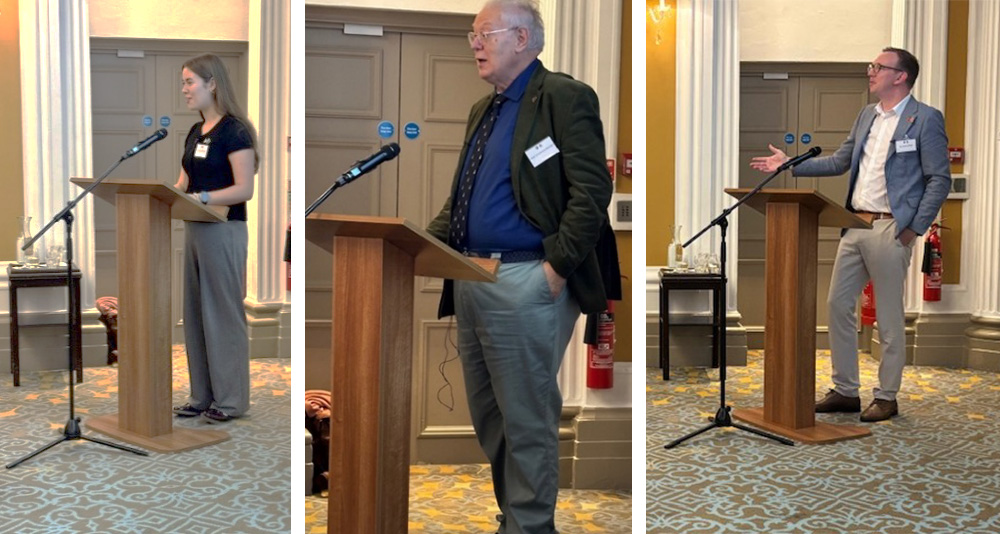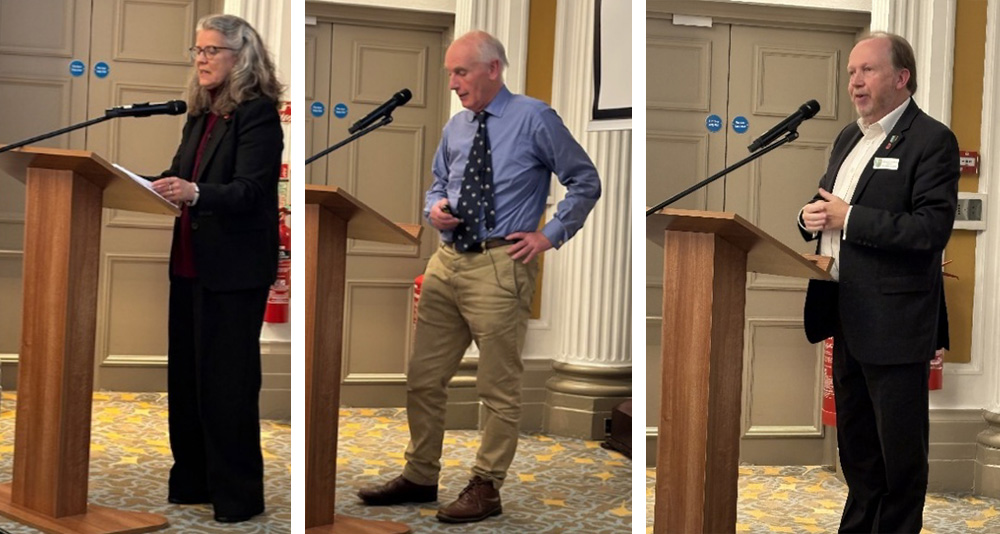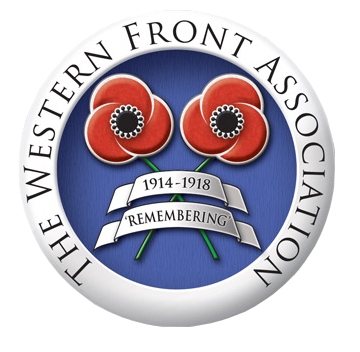Report on the 2025 joint WFA-Gallipoli Association conference
- Home
- Latest News
- 2025
- November 2025
- Report on the 2025 joint WFA-Gallipoli Association conference
The Gallipoli Association and The Western Front Association welcomed a sellout crowd in the RAF Club, Piccadilly on Saturday 1st November 2025, at their joint conference.
A report by Dr Adam Prime, with additional text and photos from Thomas Iredale.

‘Courage Without Glory’
Marking the 110th anniversary of the Gallipoli Campaign, the conference explored grand strategy right down to the minutia of individual nurses.
After the ‘Ode of Remembrance’, from Binyon’s poem ‘Lest We Forget’, was recited at the beginning of the conference, Sophie Haworth, the recently-appointed Youth Ambassador for the Gallipoli Association, gave the opening address.
The first speaker was well known military historian and academic Professor Stephen Badsey on “Gallipoli, the Western Front, and the Development of Amphibious Warfare”. Stephen’s paper opened with a dissection of Britain’s pre-1914 amphibious capability. In short, Britain had no amphibious capability at the outset of the Great War. They lacked the trained troops or the necessary equipment. That is not to say that the British were not thinking about amphibious operations. In 1904, none other than Sir John French oversaw the Invasion of Clacton Sands, an amphibious exercise involving 12,000 troops. This, according to Stephen, was part of Britain’s wider thinking on their part in any coming European war. The Royal Navy would be Britain’s main instrument of war but a striking force, based at Aldershot, could be landed and supported by the navy. Stephen suggested that Britain had a good grasp of the theoretical but as the Royal Navy expanded into the Dreadnaught era, there was no scope for building amphibious capacity. But as Stephen covered, Jackie Fisher and others had a variety of ideas of how to carry out amphibious operations even if the necessary men and materiel was not there. When it came to the Great War itself, Britain considered many options both on the Belgian and French coast and in the Mediterranean. Ultimately, said Stephen, Gallipoli offered the Allies both the biggest risk and the greatest reward.
Following Stephen was Dr Adam Prime, Indian Army historian and WFA trustee. Adam’s paper was entitled: “The Indian Army experience in 1915 on Gallipoli and the Western Front”. Adam began by offering a few general observations about the Indian Army’s involvement in the First World War - 1.3 million Indian troops served in the conflict and fought in all major theatres - before homing in on the Gallipoli Campaign and the Western Front. Adam emphasised that the size and scale of both campaigns dwarfed even the largest campaigns that Indian troops and their British officers would have been used to on the Northwest Frontier of India. 16,000 Indian soldiers and labourers served on Gallipoli, whilst around 140,000 Indians found themselves on the Western Front. These numbers, combined with the British and Allied contribution meant these fronts hugely overshadowed campaigns such as the Relief of Chitral (1895) or Tirah (1897-8). Adam went on to cover casualties and casualty replacements, Indian Army units suffered high losses on both fronts and as Adam showed, provided trained replacements was difficult. Adam offered further thoughts on the weather conditions the Indian sepoys faced, their food and dietary requirements, the challenges a multi-faith army faced and their interactions with different peoples on both fronts. These interactions offered a lighter side to proceedings. On the Western Front, sepoys fostered connections with French civilians, frequenting cafes and shops, labouring on farms, even providing childcare. Whilst on Gallipoli, it was the Anzacs troops who the Indian units bonded with. Indian muleteers and gunners worked closely with the Anzacs and gained their respect, something which was even picked up by national newspapers.

A working lunch took place in the Churchill Bar and the RAF Club library. This was an opportunity for delegates to network with old friends and form new. At the back of the conference venue, many tables had been set up on which books, WFA branded goods, the GA’s QM stock were available for purchase. Before the afternoon session began, Michael Crane presented a short overview of the GA’s Helles Battlefield Study and a video to show their activities in the Helles sector of Gallipoli.
After lunch, our next speaker was Dr Andrea McKenzie, associate professor at York University in Toronto. Andrea offered a very moving paper: “Canadian Nurses: from Lemnos to the Western Front”. With casualties much higher than expected in the opening stages of the Gallipoli Campaign, the British had to ask the Canadian Medical Corps for help. 70 nursing sisters were sent to the Greek island of Lemnos, 65 of whom are identifiable, to care for casualties evacuated from the Gallipoli Peninsula. Andrea’s work is heavily reliant on the personal testimony of a handful of these nurses. The sisters belonged to Canadian Stationary Hospital No 1, which was despatched from France, and No 3, which was overseas for the first time. Conditions on Lemnos were dire, originally water could only be delivered to the hospital by pale, this was then improved to one water cart per day, but this was simply not enough. Water was rationed. The nurses began to receive their patients from August 1915. The majority of their patients arrived with dysentery as well as wounds. Those who did not arrive with dysentery soon contracted it, the lack of water meant washing adequately was near impossible. The nurses soon contracted it too. Eventually things did start to improve for the nurses and patients, tents became huts and supplies improved. Having provided such a colourful depiction of the nurses on Lemnos, Andrea continued to chart the wartime careers of these remarkable women after the hospitals on the island closed, some returned to France, others found themselves in Salonika.
Attendees were then treated to a double act. Clive Harris and Michael Keegan offered their paper “From the Dardanelles to the Dover Patrol, Roger Keyes at Gallipoli and on the Western Front” in the form of a question-and-answer session.

Clive posing a series of questions to Michael about Roger Keyes and his life and Michael offering detailed answers to each. The duo began with Keyes’ family and early life. Roger’s father had been an Indian Army General, Roger himself was born in India, but from an early age the young Roger wanted to be an admiral. Having joined the Royal Navy, Keyes’ first posting was to an anti-slavery patrol. Here, according to Clive and Michael, was where Roger cut his teeth raiding and ambushing slavers, the sort of dash which would be a regular feature of Keyes’ naval career. What came next was even more daring do. Keyes became involved in the Boxer Rebellion where he was recognised for his individual gallantry including stealing a train! It was not all boy’s own adventures however, Clive and Michael offered analysis of Roger’s time as Inspecting Captain of Submarines. It was Keyes who first began to think of the submarine as an offensive weapon, the British had previous viewed it as being for defensive purposes only. From there Clive and Michael guided the audience through Keyes’ wartime experience, including as Chief of Staff for the Dardanelles Campaign and his planning and execution of the Zeebrugge Raid. As Clive and Michael made clear, that early pluck of raiding slave ships never left Keyes, he was always keen to be on the front foot and adept at irregular warfare.
After being introduced by Colin Wagstaff, Sir Hew Strachan provided a tour de force to bring the conference to a close with “The strategic consequences of the Gallipoli campaign”. Sir Hew began by reiterating the sentiment that Stephen Badsey had ended with, the Dardanelles Campaign offered the Allies a great success. Sir Hew went to great lengths however, to showcase the strategic implications of the failed campaign. It was, according to Sir Hew, the Ottoman mine laying that held up the Royal Navy, this in turn encouraged Admiral de Robeck to accept Sir Ian Hamilton’s recommendation to land a force on the peninsula. Sir Hew pointed to the fact that Russia was central to the Allied planning and strategy, yet are often left out of the story of the Dardanelles. There was at one-point discussions about sending a Russian corps to the peninsula but ultimately just a solitary Russian cruiser was involved. Sir Hew painted a vivid strategic picture. Ottoman success meant that Bulgaria was not deterred from joining the Central Powers. This in turn provided the Central Powers with uninterrupted territory linking Germany and the Ottoman Empire, territory through which supplies could flow. The Dardanelles was important to the Germans, they had to supply the Ottomans as a priority, capture of the Straits would mean Russian resupply. As for the Ottoman Army, it was fighting on four fronts, the bulk of their forces were on the Gallipoli peninsula, success against the Allies here cost them elsewhere. Gallipoli relieved pressure on the Russian Army at a crucial moment in the Caucus Region. Furthermore, the defence of Gallipoli came at a heavy price for the Ottomans. A price so high it cost them in the long run. Sir Hew ended his paper by pointing to the fact that Allied ships did indeed sail up the Dardanelles Strait and occupy Constantinople – though three years later than originally planned.

Wrapping up such a stimulating day was no small challenge, with five papers that each shone a light on very different facets of the Gallipoli Campaign. Yet GA Historian and Trustee Stephen Chambers rose to the task with skill and flair, weaving the threads together into a fitting conclusion.
He offered heartfelt thanks to our speakers for their insights, and to the organisers—Colin Wagstaff (Trustee and Events Coordinator WFA), Hester Huttenbach and Thomas Iredale (both GA Trustees)—whose hard work made the event possible. Warm praise was also given to the RAF Club, whose impeccable service added to the day’s success. Finally, Stephen acknowledged the most important element of all: the attendees, whose commitment and presence brought the conference to life.
Gala Dinner
After the conference had drawn a close, sixty guests gathered for the much‑anticipated Gala Dinner. Pre‑dinner drinks in the 601 Squadron Room set the tone for the evening, offering a relaxed chance to mingle with speakers, reconnect with old friends, and forge new acquaintances.
The highlight followed as diners moved into the splendid surroundings of the President’s Room at the RAF Club. Against this magnificent backdrop, guests enjoyed a beautifully served three‑course meal, rounding off the day’s intellectual exchange with convivial conversation and shared celebration.






